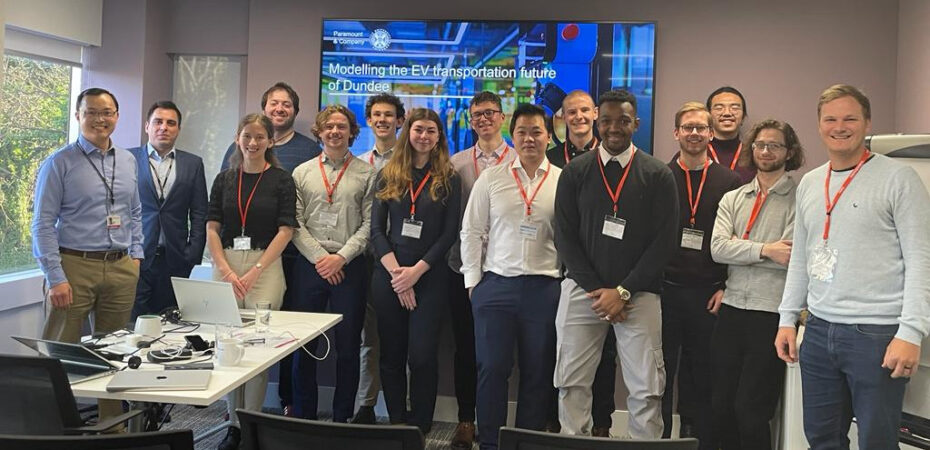
In this post, Kit Daniel Searle, University Teacher in Operational Research (OR)↗️ at the School of Mathematics↗️ shares their experience embedding a low-risk consultancy project within their course curriculum highlighting the perks of student-industry collaboration. This post belongs to Teaching Matters’ Learning & Teaching Enhancement theme: Embedding enterprise in the curriculum↗️.
In recent years, increased pressure has been placed on educational institutions, by government and industry, to provide opportunities for higher education students to acquire and develop the skills required for industry (Thomas S, & Busby S, 2003↗️). This is a sentiment which I support because while some students will continue with an academic career, most students will go on to work in industry or become an entrepreneur. Therefore, teachers in higher education have the important responsibility of equipping students for work life after university. To me, this implies not only equipping the students with the “hard skills” that they will require such as coding and some theory but also equipping them with “soft skills” such as how to work as a team and how to best present your ideas for impact. This is a theme which I embed in my course.
I am the course organiser for a SCQF 11 course called Methodology, Modelling and Consultancy Skills↗️ which is taught as part of the Operational Research MSc programme↗️ at the University of Edinburgh’s School of Mathematics. The course is taught over an 11 week semester where I spend the first six weeks teaching the students some fundamental consultancy principles in what I suppose is a fairly traditional lecture style. The objective of these first six weeks is, however, to equip the students for a real-life consultancy group project co-lead by an industry partner in the final 5 weeks of the semester. I have found this split to be very useful for the students because when the students are expected to complete a consultancy project they are equipped with the necessary tools and methodologies. This now gives the students a platform to showcase their skills.
The most appealing aspect of this course was certainly the aforementioned consultancy project. The industry partner, a consultant from Sopria Steria, and I actively worked together on scoping a project that is open ended, challenging, engaging and relevant to the students with the intention that the students would submit for a variety of different solutions. We were deliberately vague in describing the essence of the problem because I believe that the most important aspect of solving problem is to identify what the problem is and to be certain that you are actually solving the correct problem. As a result of this deliberately vague problem description, the students were permitted two weekly meetings, one with myself and the other with the industry partner. The structure of the meetings worked well because they could receive advice from the consultant who is familiar with the practical aspects of the topic and also from myself who is an expert in the modelling methodologies which may be employed to solve the practical problem.
The project in the 2022/23 academic year involved designing the charging infrastructure for a Scottish city. The problem statement was simple, how should the Scottish city plan and design their electric vehicle charging infrastructure in the next five years. The only data that the students were given is the location of all the existing charging stations, some locations of potential charging stations such as parking lots and some points of interest such as schools or restaurants and a forecast of electric vehicle charging demand in the next five years. How they solved the problem and any additional data such as a budget or costs associated with building electric vehicle charging stations was all up to them. This proved to be a very fun challenge for the students!
At the culmination of the five week project the top three project groups where invited to a day visit to the industry partners offices where they presented their projects to the company. The students were very positive in their feedback saying they enjoyed that they felt as if they worked on a project that can actually have an impact on society, that there was not a single solution to the project which allowed them to think creatively about different solutions and have intellectual debates amongst their groups.
After the success of this project it is my intention to continue this relationship with the industry partner because I can see the clear benefits for both parties. The industry partner is afforded the opportunity to interact with and recruit strong candidates and the students are afforded the experience of working in a “low risk” consultancy environment. The industry partner was so impressed with many of the students that many of them were offered jobs!
I am always happy to have conversation about running such projects and if you have run a similar project or have the intention to do something similar please do reach out to me!
Reference:
[1] Thomas S, & Busby S, 2003. Do industry collaborative projects enhance students’ learning?, Education+ Training, 45, pp. 226-235 Kit Daniel Searle
Kit Daniel Searle
Kit is a University Teacher in Operational Research (OR) at the University of Edinburgh’s School of Mathematics. His research interests involve exact and heuristic solution approaches towards solving combinatorial optimisation problems in the realm of logistics planning with an emphasis on the interaction between facility location and vehicle routing problems. I teach two MSc courses on the OR degree program offered at the School of Mathematics. The first for which I am the course organiser is called Methodology, Modelling and Consultancy skills in an applied OR course where we teach the basics of building and solving optimisation models using commercial solvers to solve practical problems. The second called Fundamentals of Optimisation is centred on the theoretical build-up of the prized Simplex Algorithm.


